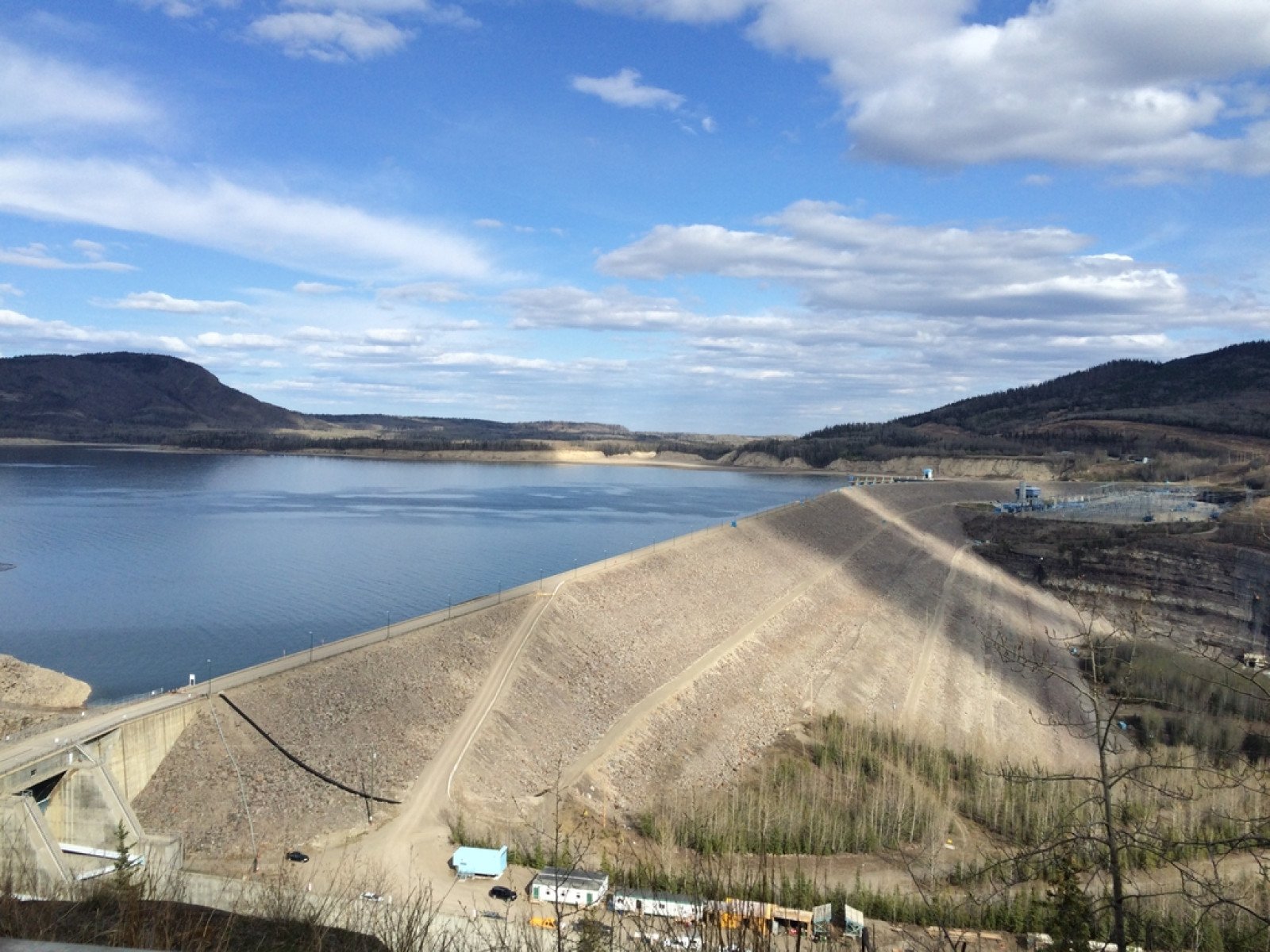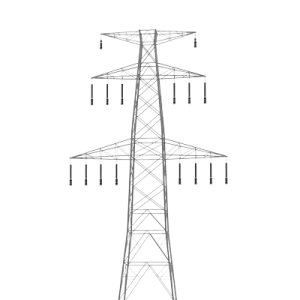Respectful dam designs
Which dam design better reflects and respects Indigenous views and understandings of water?

Overview
Students are introduced to two types of hydro dams—large scale hydro and run-of-river—and decide which better reflects and respects Indigenous views and understandings of water.
Instructions
What you'll need
- "Responsive Indigenous design" slides
- "Thinking about respectful designs" worksheet, one per student
- "Indigenous perspectives on water" handout, one per pair of students
- "Fishbone thinking organizer" worksheet, one per student
- Digital projector and screen
- Organize your students into pairs and provide each group with a copy of the "Indigenous perspectives on water" handout. Encourage groups to find at least one important idea from each source that describes an Indigenous perspective or understanding of water. Alternatively, assign each group one of the sources to examine.
- Invite groups to share their important ideas with the class. Work with students to group common important ideas, and see if you can develop at least five important Indigenous perspectives or understandings of water. Record these ideas for use later in this activity.
- Provide each student with a copy of the "Thinking about respectful designs" worksheet and ask them to make a decision: which design of dam better reflects and respects Indigenous views and understandings of water? Encourage groups to note their initial decision and reasons, assuring them that they will have opportunities to revisit their thinking.
- To begin the activity, open up the "Responsive Indigenous design" slides. Show slides 3 and 4 and introduce students to two dam designs that are used to generate electricity: large scale and run-of-river. Encourage students to examine the images carefully, and to make inferences about similarities and differences that the two designs might share.
- Provide each student with a copy of the "Fishbone thinking organizer" worksheet. Guide students in labelling the important ideas from the beginning of the activity in each of the “Important idea” boxes (Each important idea will be used twice: once in the top half and once in the bottom half of the fishbone organizer. For example, if one of the important ideas is “the many forms of water must be respected,” it would be placed in both “Important idea 1” boxes).
- Tell groups that their challenge find evidence about how each dam design supports (or doesn’t support) their selected five important ideas about water. Students can use visual clues from the images, as well as any inferences they can make. Alternatively, one partner in each group could focus on the top part of the organizer (large hydro dams) and the other on the bottom half (run-of-river dams)
- Ask each group to decide which type of design better reflects and respects Indigenous views and understandings of water. Invite them to share one reason for their choice with the class.
- Guide students’ attention back to their worksheets and encourage them to independently revisit their initial thinking: has their decision changed or stayed the same? Encourage them to refine the using their evidence they gathered in their fishbones.
- To conclude the activity, work with the class to brainstorm inquiry questions that could be used to find more information about the two designs of dams and which better reflects and respects Indigenous views and understandings of water.
Modify or extend this activity
Extension
- This activity can be extended by provide students time to gather additional evidence about how well each design of dam reflects and respects Indigenous views and understandings of water.
- Invite students to suggest practical and powerful changes that could be made to both designs of dams so that they better reflect and respect Indigenous views and understandings of water.
Curriculum Fit
Grade 7 Science
Big idea
- The electromagnetic force produces both electricity and magnetism
Content
- Electricity:
- Generated in different ways with different environmental impacts
Curriculum competencies
Questioning and predicting
- Demonstrate a sustained intellectual curiosity about a scientific topic or problem of personal interest
- Make observations aimed at identifying their own questions about the natural world
- Identify a question to answer or a problem to solve through scientific inquiry
Processing and analyzing data and information
- Apply First Peoples perspectives and knowledge, other ways of knowing, and local knowledge as sources of information
Applying and innovating
- Contribute to care for self, others, community, and world through personal or collaborative approaches
Communicating
- Communicate ideas, findings, and solutions to problems, using scientific language, representations, and digital technologies as appropriate
- Express and reflect on a variety of experiences and perspectives of place
Grade 9 Science
Big idea
- The biosphere, geosphere, hydrosphere, and atmosphere are interconnected, as matter cycles and energy flows through them
Content
- Sustainability of systems
- First Peoples knowledge of interconnectedness and sustainability
Curriculum competencies
Questioning and predicting
- Demonstrate a sustained intellectual curiosity about a scientific topic or problem of personal interest
- Make observations aimed at identifying their own questions, including increasingly complex ones, about the natural world
Processing and analyzing data and information
- Apply First Peoples perspectives and knowledge, other ways of knowing, and local knowledge as sources of information
Applying and innovating
- Contribute to care for self, others, community, and world through individual or collaborative approaches
- Generate and introduce new or refined ideas when problem solving
Communicating
- Communicate scientific ideas, claims, information, and perhaps a suggested course of action, for a specific purpose and audience, constructing evidence-based arguments and using appropriate scientific language, conventions, and representations
- Express and reflect on a variety of experiences, perspectives, and worldviews through place
Assessments
Assess how well students:
- Understand Indigenous perspectives and understandings of water.
- Make accurate observations and plausible inferences .
- Support decisions with evidence.
Final responses to the initial thinking question may be used as an “exit ticket” or as evidence of student learning related to curricular outcomes.
Teaching Notes
Dam designs
For more information on dam designs, visit this page on run-of-river designs and this page on large hydropower dams.
As many students will probably initially choose run-of-river dams as their choice, provide student with a little more information on run-of-river dams to challenge this thinking and create genuine curiosity about the differences between the dams. This creates an authentic opportunity for students to extend this learning with additional research.
A visual literacy strategy where students divide an image into four quadrants and then examine the details in each quadrant more carefully could be used to help students pay closer attention to details.
How this activity was developed
These materials were created with guidance from Indigenous educators, subject matter experts and thought leaders to help draw upon important teachings, learnings, and Indigenous perspectives.
For centuries, the traditional western view of water has often been focused on its value as a resource. Indigenous people have a unique relationship with the waters of British Columbia. Since time immemorial, water has played a sacred role and is seen as a living entity. How water is used must be carefully considered with a view towards not just the immediate need and impact, but the needs and perspectives of generations to follow.
We are dedicated to deep listening and respectfully highlighting Indigenous ways of knowing in the materials we provide B.C. educators. If you have any feedback for us on these activities, or suggestions for others, please email schools@bchydro.com. We would love to hear from you.
About the artist
The design of the worksheets in this activity was a collaborative effort with Indigenous artist Kelli Clifton. Kelli Clifton was born and raised in Prince Rupert, British Columbia and is Gitga’at from the community of Hartley Bay. Clifton is interested in using her artwork as a form of storytelling—especially in relation to her Ts’msyen language (Sm’algyax), her coastal upbringing and her experiences as an Indigenous woman. Clifton currently lives in her home community where she continues to practice her art and teaches Sm’algyax at a local high school. Learn more about Clifton's art on her Facebook page.
BC Hydro’s commitment to reconciliation
BC Hydro exists to serve British Columbians by providing clean, reliable and affordable electricity. We recognize that maintaining and developing the system has impacts on the lives and interests of Indigenous Peoples. To support our move towards true and lasting reconciliation, BC Hydro will acknowledge past wrongs, listen to Indigenous perspectives and seek shared understanding with First Nations communities and governments.
Learn more about our Statement of Indigenous Principles.







